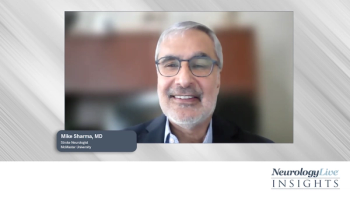
New Guideline Released for Vegetative, Minimally Conscious States
This guideline gives recommendations to improve diagnosis, health outcomes and care of individuals with prolonged disorders of consciousness.
Joseph Giacino, PhD
A new guideline was published in the online issue of Neurology by the American Academy of Neurology, American Congress of Rehabilitation Medicine and the National Institute on Disability, Independent Living, and Rehabilitation Research, providing recommendations1 for clinicians to improve diagnosis, health outcomes and care of individuals with prolonged disorders of consciousness.
The recommendations were based on carefully reviewed systematic evidence, related evidence, care principles and inferences of those with prolonged disorders of consciousness. An accurate diagnosis and ongoing medical and rehabilitative care based on the latest evidence may mean a better chance for recovery for those in a persistent vegetative or minimally conscious state caused by brain injury, the guideline says.
“People are sometimes misdiagnosed due to underlying impairments that can mask awareness,” guideline lead author Joseph T. Giacino, PhD, Harvard Medical School and Spaulding Rehabilitation Hospital, said in a statement 2. “An inaccurate diagnosis can lead to inappropriate care decisions and poor health outcomes. Misdiagnosis may result in premature or inappropriate treatment withdrawal, failure to recommend beneficial rehabilitative treatments and worse outcome. That is why an early and accurate diagnosis is so important.”
According to the guideline, when discussing prognosis with caregivers during the first 28 days postinjury, clinicians must avoid statements suggesting that prognosis is poor—long-term care must be discussed. Patient and family preferences must be identified early and throughout provision of care to help guide the decision-making process for those with prolonged disorders of consciousness.
Clinicians should identify and treat confounding conditions, optimize arousal and perform serial standardized assessments in order to improve diagnostic accuracy in both adults and children with prolonged disorders of consciousness.
The guideline states that individuals should be assessed for evidence of pain or suffering and should be treated if there’s a reason to suspect pain, regardless of the level of consciousness, and families should be counseled about uncertainty regarding the degree of pain and suffering that may be experienced by patients.
Those with disorders of consciousness who have achieved medical stability should be referred to settings staffed with multidisciplinary rehabilitation teams and specialized training in order to best optimize diagnostic evaluation, prognostication and subsequent management. Evaluations by those with specialized training should be repeated several times early in recovery, especially throughout the first 3 months after a brain injury.
Clinicians caring for patients with a traumatic vegetative state or unresponsive wakefulness syndrome or on a minimally conscious state should prescribe amantadine 100—200 mg for adults 4–16 weeks post injury to hasten a functional recovery and reduce disability, lessen health care costs and minimize psychosocial stressors in patients and caregivers early on.
Given the frequency of recovery of consciousness after 3 months in those in a nontraumatic vegetative state/ unresponsive wakefulness syndrome, and after 12 months in patients with traumatic vegetative state/ unresponsive wakefulness syndrome, recent evidence indicates that the term chronic vegetative state/ unresponsive wakefulness syndrome should replace permanent vegetative state, accompanied with a duration of vegetative state/ unresponsive wakefulness syndrome.
“The Guideline demonstrates that patients with disorders of consciousness comprise a population at risk, vulnerable to misdiagnosis and to medical mismanagement that can negatively affect their access to ongoing care, rehabilitation, and pain and symptom management,” Joseph Fins, MD, MACP, and James Bernat, MD, said in an editorial3. “To address this problem, the Guideline affirmatively calls for the provision of skilled care by knowledgeable practitioners—a standard of care that is currently unavailable to most patients except those few who are lucky enough to gain admission to the small number of elite specialized rehabilitation centers.”
There are no established therapies for children with prolonged disorders of consciousness, according to the guideline, in which case clinicians should counsel families that the natural history and prognosis of children with this state is not well-defined and there are no current evaluations established that improve prognostic accuracy in this patient population.
“If its recommendations are heeded, the Guideline will be viewed as a historic work that helped transform the care of patients with disorders of consciousness and deepened society’s appreciation of the ethical mandate to work towards this laudable goal,” Fins and Bernat conclude. “By articulating this aspirational standard of care and laying bare the deficits of current practices, the Guideline provides a useful metric by which society should work to meet its normative obligations to patients with severe brain injury.”
REFERENCE
1. New Guideline Released for Managing Vegetative and Minimally Conscious States [news release]. Minneapolis, Minnesota: American Academy of Neurology; August 8, 2018. http://n.neurology.org/lookup/doi/10.1212/WNL.0000000000005927. Accessed August 8, 2018.
2. Giacino J, Katz D, Schiff N, et al. Practice guideline update recommendations summary: Disorders of consciousness. Neurology. 2018; 91:1-11. doi:10.1212/WNL.0000000000005926.
3. Fins J, Bernat J. Ethical, palliative, and policy considerations in disorders of consciousness. Neurology. 2018;91:1-5. doi:10.1212/WNL.0000000000005927.
Newsletter
Keep your finger on the pulse of neurology—subscribe to NeurologyLive for expert interviews, new data, and breakthrough treatment updates.


































